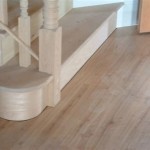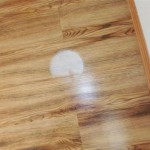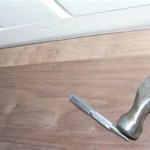How Much Does Bathroom Floor Heating Cost?
Bathroom floor heating, a luxury that has become increasingly accessible, can transform a cold, tiled surface into a comfortably warm oasis. Understanding the costs associated with installing and operating bathroom floor heating is crucial for homeowners considering this upgrade. The overall cost is multifaceted, encompassing materials, installation labor, and ongoing energy consumption.
The initial investment in bathroom floor heating can vary significantly based on several factors, primarily the type of heating system chosen, the size of the bathroom, and the complexity of the installation process. Electric radiant floor heating systems, which use electric cables or mats embedded beneath the flooring surface, are a common choice. Hydronic systems, using heated water circulated through pipes, are another option, often more energy-efficient for larger spaces but typically requiring a more substantial initial investment.
This article will delve into the various cost components, providing a comprehensive overview of what to expect when budgeting for bathroom floor heating. It will explore the pricing differences between electric and hydronic systems, discuss the impact of labor costs, and outline the long-term operational expenses to allow for informed decision-making.
Material Costs: Electric vs. Hydronic Systems
The type of heating system chosen significantly impacts the upfront material costs. Electric radiant floor heating systems generally have a lower initial material cost compared to hydronic systems. Electric systems consist primarily of heating cables or mats, a thermostat, and related wiring components. The cost of these materials is typically calculated per square foot of the heated area.
Electric heating mats, which are pre-spaced cables adhered to a mesh backing, often simplify installation and can range in price from approximately $8 to $15 per square foot, depending on the brand, quality, and heat output. Loose heating cables, allowing for more customized layouts, may have a slightly lower per-square-foot cost but require more meticulous installation. The thermostat, a crucial component for controlling the floor temperature, can range from basic models costing around $50 to programmable, Wi-Fi-enabled thermostats exceeding $200.
Hydronic systems, on the other hand, involve a more complex infrastructure. They require a boiler or water heater to heat the water, a pump to circulate the water through the pipes, and a network of tubing installed beneath the flooring. The cost of a new boiler can be substantial, ranging from $3,000 to $10,000 or more, depending on the type and capacity. Even if an existing boiler can be utilized, additional components, such as manifolds, pumps, and specialized tubing, will add to the overall material cost. The cost of hydronic tubing typically ranges from $3 to $7 per square foot, excluding the significant expense of the boiler and associated plumbing work.
In summary, for a smaller bathroom, the material cost for an electric system might range from $500 to $1,500, while a hydronic system could easily exceed $5,000, particularly if a new boiler is required. For larger bathrooms, the disparity in material costs can become even more pronounced.
Installation Costs: Labor and Complexity
Labor costs represent another significant portion of the total expense. Installation costs are influenced by the complexity of the project, the existing flooring, and the local labor rates charged by contractors. Electric radiant floor heating installation is generally less labor-intensive than hydronic systems, translating to lower installation costs.
Installing electric heating mats often involves preparing the subfloor, laying the mats according to the manufacturer's instructions, connecting the mats to the thermostat, and then applying a self-leveling compound or thin-set mortar before installing the final flooring surface. A qualified electrician is typically required to connect the system to the electrical panel. The labor cost for electric radiant floor heating can range from $5 to $12 per square foot, depending on the installer's experience and the project's complexity.
Hydronic system installation is considerably more complicated. It necessitates connecting the system to the home's plumbing, installing the tubing in a precise pattern, pressure-testing the system to ensure no leaks exist, and then encasing the tubing in a concrete or gypsum-based topping. A licensed plumber is essential for this type of installation due to the complexities of connecting to the water supply and ensuring proper system functionality. The labor cost for hydronic floor heating can range from $10 to $25 per square foot, reflecting the increased time and specialized skills required.
Factors that can further impact labor costs include the need to remove existing flooring, repair the subfloor, or modify existing plumbing infrastructure. Bathrooms with complex layouts or difficult-to-reach areas may also incur higher labor charges. Obtaining multiple quotes from qualified contractors is essential to ensure a competitive price and to assess their experience with radiant floor heating systems.
Therefore, a bathroom with 50 square feet of floor space could see labor costs range from $250 to $600 for electric systems and $500 to $1250 or more for hydronic systems. These costs can fluctuate considerably based on the aforementioned variables.
Operational Costs: Energy Consumption and Efficiency
Beyond the initial investment, ongoing operational costs are a significant consideration. The energy consumption of bathroom floor heating systems directly impacts monthly utility bills. Electric radiant floor heating systems are generally less energy-efficient than hydronic systems, particularly for heating larger areas or operating the system for extended periods. However, improvements in insulation and thermostat technology are mitigating some of these differences.
Electric systems consume electricity to generate heat, with the wattage varying depending on the square footage and desired temperature. A typical electric system might consume 10 to 15 watts per square foot. For example, a 50-square-foot bathroom with a 12-watt-per-square-foot system would consume 600 watts per hour. Assuming the system operates for 4 hours per day, the daily consumption would be 2.4 kilowatt-hours (kWh). At an average electricity rate of $0.15 per kWh, the daily operating cost would be $0.36. Over a month, this translates to approximately $10.80. However, these costs can escalate significantly if the system is used more frequently or if electricity rates are higher.
Hydronic systems, while having a higher upfront cost, often exhibit greater long-term energy efficiency. Because water retains heat more effectively than electric cables, hydronic systems require less energy to maintain a consistent temperature. If the home already has a high-efficiency boiler, the incremental cost of heating the water for the bathroom floor can be relatively low. The operational cost depends on the efficiency of the boiler, the insulation levels in the bathroom, and the desired temperature. In some cases, hydronic systems can be 20% to 40% more energy-efficient than electric systems, leading to substantial savings over the lifespan of the system.
The use of programmable thermostats can also significantly reduce energy consumption. These thermostats allow users to set schedules for heating, ensuring that the floor is only heated when needed. For example, the thermostat can be programmed to turn on the heating system an hour before the morning routine and turn it off when the bathroom is not in use. Smart thermostats offer even greater control, allowing users to remotely monitor and adjust the temperature via a smartphone app.
Moreover, proper insulation beneath the heating system is crucial for maximizing energy efficiency. Insulation helps to prevent heat loss into the subfloor, directing the heat upwards towards the flooring surface. Without adequate insulation, a significant portion of the heat generated by the system can be wasted, leading to higher energy bills.
It's important to note that these are estimates, and actual operational costs can vary based on several factors. Conduct a thorough energy audit and consult with a heating professional to obtain a more accurate estimate for a specific bathroom and usage pattern.
Beyond the core system elements, several ancillary costs can influence the overall expense. These costs can be overlooked but should be factored into the budget to avoid unexpected surprises.
One such cost is flooring. Certain flooring materials are more suitable for use with radiant floor heating than others. Tile and stone are excellent conductors of heat and are commonly used with these systems. However, other materials, such as engineered wood or laminate, can also be used, but it is crucial to select materials specifically designed for use with radiant heating to avoid warping or damage. The cost of new flooring can range from $3 to $20 or more per square foot, depending on the material chosen.
Another potential cost is subfloor preparation. If the existing subfloor is uneven, damaged, or inadequately insulated, it may need to be repaired or replaced before installing the heating system. Subfloor repairs can add several hundred dollars to the overall cost.
Permits and inspections may also be required, depending on local building codes. The cost of permits can vary widely by location and the scope of the project. Failing to obtain the necessary permits can result in fines and delays.
Finally, consider the cost of any modifications to the bathroom's electrical or plumbing systems. If the existing electrical panel is inadequate to handle the additional load of an electric radiant heating system, it may need to be upgraded, which can be a significant expense. Similarly, if the hydronic system requires modifications to the existing plumbing infrastructure, this will add to the overall cost.
Thorough planning and careful budgeting are essential for a successful bathroom floor heating installation. By understanding the various cost components, homeowners can make informed decisions and avoid unexpected expenses. Obtaining multiple quotes from qualified contractors, carefully selecting flooring materials, and factoring in ancillary costs will help to ensure that the project stays within budget and delivers the desired level of comfort and energy efficiency.

How Much Does A Heated Bathroom Floor Cost In 2025 Warmup

How Much Does A Heated Bathroom Floor Cost In 2024

What To Know About Radiant Floor Heating Cost

How Much Does A Heated Bathroom Floor Cost In 2024

Is Radiant Floor Heating In A Bathroom Worth The Cost

How Much Do Heated Floors Cost Angi

How Much Does Radiant Floor Heating Cost 2025

How Much Did It Cost To Add Floor Heating This Chicago Bathroom

Underfloor Heating Cost Breakdown 2025 Checkatrade

Heated Floor Best Bathroom Cost
Related Posts








